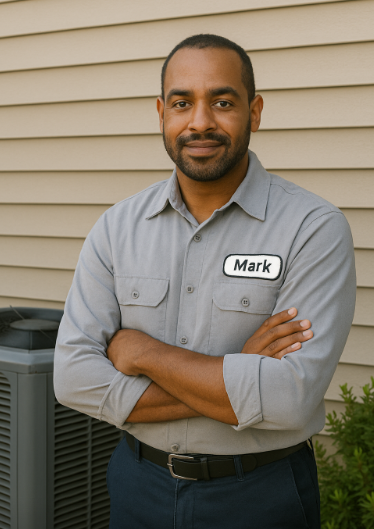Mark Callahan here. Let’s talk about electric furnaces—how much they cost, what size you need, and what to expect during installation. Whether you’re replacing an old unit or building a new home, understanding the ins and outs of electric heating units will help you make a smart investment in comfort and efficiency.
If you’re considering a system like the Goodman 3 Ton 14.5 SEER2 R-32 Bundle, this guide will help you compare traditional central AC with electric heating systems for your home.
What Is an Electric Furnace?
An electric furnace is a heating system that generates warmth using electricity instead of gas or oil. Inside the unit, electric resistance elements heat air, which is then circulated through your home with a blower. Because there’s no combustion, these units are clean, quiet, and safe—no venting required, no flue gases, no risk of carbon monoxide leaks.
Electric furnaces can be:
-
Central electric furnaces powering your whole home
-
Upflow or downflow electric furnaces depending on duct configuration
-
Small or whole-house units tailored to your space and energy needs
For more technical details on electric furnace operation and efficiency, check out the Department of Energy’s guide.
How Much Does an Electric Furnace Cost?
Pricing can be confusing, but here’s a breakdown:
-
Unit Cost: $800–$4,500 depending on size, features, and brand
-
Installation Cost: $700–$3,500 for professional setup
-
Total Cost: $2,500–$7,500 on average, including labor
Prices vary with BTU capacity, efficiency, and complexity of installation. For instance:
-
60,000 BTU electric furnace – suitable for medium-sized homes
-
80,000 BTU electric furnace – ideal for larger homes or colder climates
-
100,000 BTU electric furnace – for very large homes or whole-house heating
You can compare costs and options on sites like HVAC.com, which breaks down the range of units and installation fees.
Sizing an Electric Furnace for a 2,000 Sq Ft Home
Sizing is crucial. An undersized furnace won’t heat effectively, while an oversized unit can cycle on and off too frequently, reducing efficiency and comfort.
For a 2,000 sq ft home, most electricians and HVAC professionals recommend:
-
60,000–80,000 BTU electric furnace depending on insulation, ceiling height, and local climate
-
Central electric HVAC unit for uniform temperature control
If you want a more precise calculation, Modernize provides a helpful guide to sizing based on square footage and climate zone.
Installation Considerations
Installing an electric furnace is a bit more straightforward than gas or oil systems, but professional installation is critical. Here’s what to consider:
-
Electrical Capacity: Ensure your home can supply enough power for the furnace—sometimes upgrades to your electrical panel are required.
-
Ductwork Configuration: Decide between upflow (air moves upward) or downflow (air moves downward) installation.
-
Professional Setup: Hire a licensed contractor to handle connections, calibration, and safety checks.
For a deeper dive into professional installation and what to expect, see Angi, which outlines installation steps and costs.
Benefits of an Electric Furnace
Electric furnaces have several advantages:
-
Clean and Safe: No combustion, no carbon monoxide risk
-
Efficient: No venting losses, 100% of electricity goes to heating
-
Quiet Operation: Modern units operate smoothly with minimal noise
-
Maintenance-Friendly: Fewer moving parts than gas furnaces, fewer repairs over time
-
Flexible Installation: Works in homes without gas lines or chimney venting
Additionally, pairing an electric furnace with an electric air conditioner can provide a full electric HVAC system, allowing year-round comfort with centralized control.
Comparing Electric Furnace Options
Some options you may encounter:
-
Electric Forced Air Furnace: Provides rapid heating with ducted air
-
Whole House Electric Heater: Offers uniform heat throughout the home
-
Small Electric Furnace: Good for smaller spaces or supplemental heating
-
Electric Furnace with AC Unit: Combines heating and cooling in one system
You can explore a wide range of units for sale through trusted retailers or manufacturer sites like Carrier.
Energy Efficiency and Operating Costs
Efficiency is measured by AFUE (Annual Fuel Utilization Efficiency). Most modern electric furnaces achieve high AFUE ratings because electricity is fully converted to heat. While electricity can be more expensive than gas in some regions, the overall safety, maintenance savings, and energy-efficient models make electric furnaces a viable option.
Some tips for reducing operating costs:
-
Use a programmable thermostat
-
Maintain your furnace regularly (clean filters, inspect coils)
-
Ensure your home is well-insulated
-
Consider variable-speed blowers to reduce electricity use during lower-demand periods
Maintenance Tips
To maximize lifespan:
-
Replace or clean filters every 1–3 months
-
Inspect your furnace annually for loose wiring or wear
-
Clean the blower fan and surrounding components
-
Schedule professional tune-ups yearly
Routine maintenance not only improves efficiency but prevents costly repairs down the line.
Final Thoughts
For a 2,000 sq ft home, investing in a quality electric furnace can provide safe, efficient, and reliable heating. Pair it with an electric HVAC system or air conditioner, and you have a complete solution for year-round comfort.







